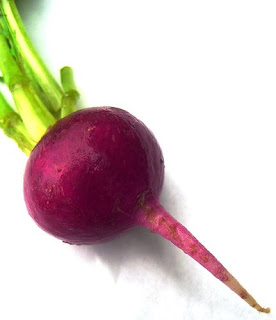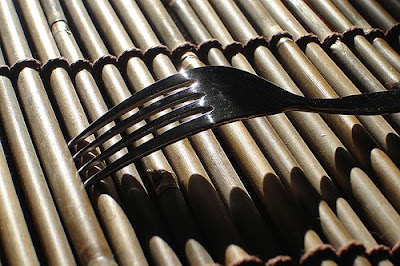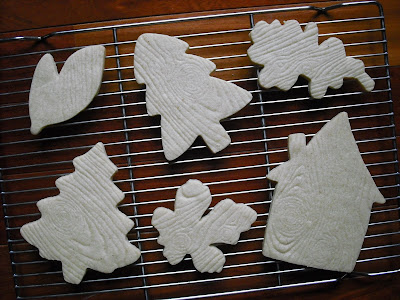 We sipped on pineapple batidas, a fruity drink infused with Cachaça [kah-SHAH-sah]. Cachaça is like rum, but differs as well from rum in that it is made from sugarcane juice while rum is made from either molasses or sugarcane juice then aged in oak barrels.
We sipped on pineapple batidas, a fruity drink infused with Cachaça [kah-SHAH-sah]. Cachaça is like rum, but differs as well from rum in that it is made from sugarcane juice while rum is made from either molasses or sugarcane juice then aged in oak barrels.Guests started out with a simple tomato salad with avocado salsa. The main course was flank steak that had been marinating in chili powder, onions, green peppers, garlic, cumin and lemon juice - which was then grilled and sliced against the grain. This was served with a latin american potato salad which had a vinagarette dressing and included green peppers, jalapenos, eggs and green onions.
 Lastly, we finished the meal off with my version of caipirinha [KIE-PEE-REEN-YAH]) pie. A chiffon pie infused with rum and topped with toasted coconut. The caipirinha is Brazil's national coctail. Guests also sampled Guarana Antarctica, a popular Brazilian soda which slightly resembles ginger ale. The large yellow, mylar covered egg is a traditional Easter treat in Brazil according to Malu at Brazilian Connection Specialty Foods in Minnetonka, MN. When unwrapped, it had a faux boix pattern (had to love that) and it had roughly eight wrapped Brazilian chocolate candy treats to try. Check out their website at http://www.brazilianconnectioncompany.com/ or call 952-935-2708 for details.
Lastly, we finished the meal off with my version of caipirinha [KIE-PEE-REEN-YAH]) pie. A chiffon pie infused with rum and topped with toasted coconut. The caipirinha is Brazil's national coctail. Guests also sampled Guarana Antarctica, a popular Brazilian soda which slightly resembles ginger ale. The large yellow, mylar covered egg is a traditional Easter treat in Brazil according to Malu at Brazilian Connection Specialty Foods in Minnetonka, MN. When unwrapped, it had a faux boix pattern (had to love that) and it had roughly eight wrapped Brazilian chocolate candy treats to try. Check out their website at http://www.brazilianconnectioncompany.com/ or call 952-935-2708 for details.
This class was such a success that I am going to be doing it again for those that were unable to attend.
































 The workhorse, my Rowenta Pressure Steam Iron. I have to start this iron seven minutes before I can use it due to the large water holding tank that generates the steam. This thing doesn't quit, it can go for hours. You can see the damp linen to the right.
The workhorse, my Rowenta Pressure Steam Iron. I have to start this iron seven minutes before I can use it due to the large water holding tank that generates the steam. This thing doesn't quit, it can go for hours. You can see the damp linen to the right. Now I begin to iron the damp napkin. You should have steam coming off the linen and you sometimes on darker linens will notice the color lighten as the water/steam evaporate from it.
Now I begin to iron the damp napkin. You should have steam coming off the linen and you sometimes on darker linens will notice the color lighten as the water/steam evaporate from it. Here I have done half the napkin, you can see the color change.
Here I have done half the napkin, you can see the color change.  Once you are done with the entire linen, you then fold it in half, and iron over the entire half. You will still most likely have some steam arising, that is good because it allows for good creases.
Once you are done with the entire linen, you then fold it in half, and iron over the entire half. You will still most likely have some steam arising, that is good because it allows for good creases. Then you fold the napkin over itself again so it resembles a long strip and you iron over that again.
Then you fold the napkin over itself again so it resembles a long strip and you iron over that again. Lastly, you fold that strip in half over itself so you can see the edges/corners and finally iron over that. By doing this, you will add years of life to your napkins and make many table settings and events more special.
Lastly, you fold that strip in half over itself so you can see the edges/corners and finally iron over that. By doing this, you will add years of life to your napkins and make many table settings and events more special.




